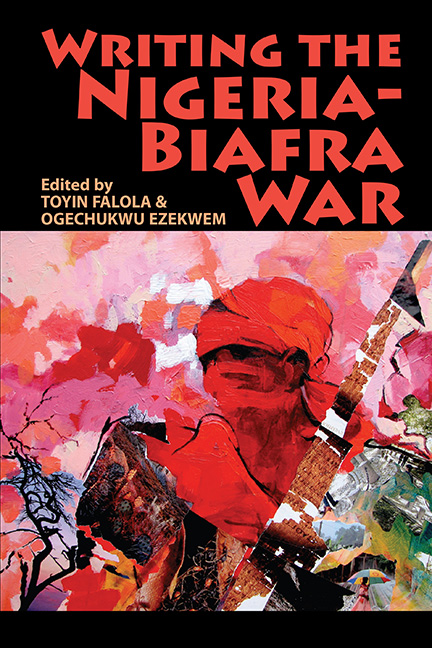Book contents
- Frontmatter
- Contents
- Notes on Contributors
- List of Abbreviations
- Timeline
- Map of Biafra 30 May 1967 – 1 May 1969
- 1 Scholarly Trends, Issues, and Themes: Introduction
- Part I On The History Of The Nigeria-Biafra War
- Part II Critical Debates On The Nigerian Crisis
- Part III The War In Fiction, Memoir, And Imagination
- Part IV Locating Gender In Nigeria-Biafra War Literature
- Select Bibliography
- Index
2 - Background to the Nigerian Civil War
Published online by Cambridge University Press: 17 June 2021
- Frontmatter
- Contents
- Notes on Contributors
- List of Abbreviations
- Timeline
- Map of Biafra 30 May 1967 – 1 May 1969
- 1 Scholarly Trends, Issues, and Themes: Introduction
- Part I On The History Of The Nigeria-Biafra War
- Part II Critical Debates On The Nigerian Crisis
- Part III The War In Fiction, Memoir, And Imagination
- Part IV Locating Gender In Nigeria-Biafra War Literature
- Select Bibliography
- Index
Summary
Introduction
The American historian and public intellectual, Arthur Schlesinger Jr. once observed, with much propriety, that the historian suffers from an occupational disease, namely: a passion for tidiness – an obsession that stresses the importance of tidying past events in order to understand the present and, hopefully, be better prepared to face the future. The non-historian but distinguished novelist Chinua Achebe made a similar point in There Was a Country, his memoir on the Nigeria-Biafra War, published just before his death. ‘An Igbo proverb’, he wrote, ‘tells us that a man who does not know where the rain began to beat him cannot say where he dried his body’. Both Schlesinger and Achebe believe – as does this author – that a historical event cannot be fully comprehended unless serious attention is paid to its antecedents. Much of the writing about the Nigerian Civil War tends, unfortunately, to treat its causes in a perfunctory, pedestrian manner. Beginning in media res, as it were, it suffers from a palpable lack of tidiness, pays no attention whatsoever to the conflict's philosophical underpinnings, endorses generally erroneous stereotypes, and tends to be more concerned with the war itself than what brought it about. Thus, no proper lessons are learned from it, and consequently, mistakes of the past are continually repeated. It is surprising that the civil war is not made required reading in Nigerian colleges and universities, a palpable omission that should be corrected.
Using various archival and contemporary sources, oral interviews, published official documents, and some relevant recent publications, this chapter analyses the major reasons – remote and proximate – why the most populous African country, one with enormous potential and much promise, imploded within six years of independence and, to the disappointment of many, plunged itself into a disastrous civil war from which it has not fully recovered. The methodology is historical, and the conclusions are derived from a careful study of the available evidence.
Collapse of the First Republic
The collapse of Nigeria's First Republic on January 15, 1966, sent shock waves across the globe because it was generally believed that Britain’s administration of its former colonial estate was exceptional.
- Type
- Chapter
- Information
- Writing the Nigeria-Biafra War , pp. 17 - 39Publisher: Boydell & BrewerPrint publication year: 2016

